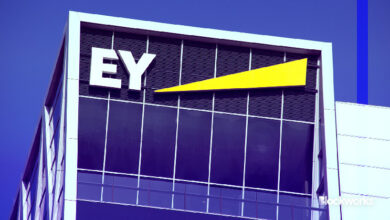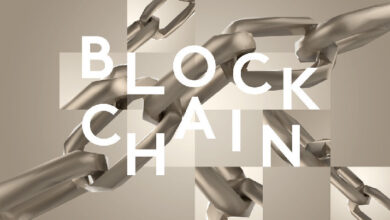Three Prime Web3 Use Cases

As the greater Web3 economy is growing, it is especially encouraging to see Web3 use cases outside the standard crypto trading, gaming, or finance-driven applications. It is clear that for Web3 to become fully integrated into society, there must be a large number of use cases that fundamentally change and improve the way we do things now. While crypto trading is interesting, it doesn’t affect the majority of people because they aren’t looking for alternate forms of investment. While Play-to-Earn gaming is fascinating, it won’t appeal to most people who aren’t really involved with gaming of any kind.
Web3 must look to our current pain points and utilize its unique features to improve these processes. Thankfully, as Web3 is evolving there are more and more of these use cases that are becoming clear, and teams of researchers and companies jumping on the opportunity to build solutions. Let’s take a look at three very strong use cases that are already improving their respective industries, and are on track to completely revolutionize the way we do things.
Supply Chain
The ability for blockchain to capture and protect a moment of truth and transparency has the potential to change our supply chains forever. This has been a strong early use case, and many different companies have worked to develop innovations around it. The core problem faced by supply chains today is a lack of trust caused by a lack of transparency. Each decade our globe seems to shrink as it becomes more and more connected. The Covid pandemic was a stark reminder of just how interconnected and delicate it is, and how little it takes to disrupt those items we rely upon. A positive aspect of this interconnected global supply chain is that we are becoming more and more aware of those far away places that actually grow, manufacture, and ship the food and products we buy. And with our expectations around social responsibility rising for companies, there is greater pressure for them to verify that the workers involved in the supply chain are treated fairly; that the environment is handled with respect; and that the items have the authentic origin, materials, and quality that was promised. To this end, IBM has made significant progress in creating supply chain tools to accomplish this. The company is using blockchain fundamentals to tackle various problems that can’t be solved traditionally. Vendor integrity is critical, and vendors who have been vetted can publish their immutable credentials onchain so that companies can easily onboard them without a completely independent vetting process. Along the supply chain, the various players can initiate action as they receive, process, and ship products, with each step logged on-chain so that the supply chain owner can get near real-time feedback along the entire chain, something that is exponentially more difficult with a multi-layer, international supply chain.
Travel
The travel industry has similar challenges to a supply chain in terms of international cooperation and a struggle with visibility and verification. However, unlike a chain, the travel industry is an incredibly complex web of companies that provide transportation, food, lodging, tours, and more. Further, while some companies are large and well organized, many more are family shops that are very local and not connected beyond a few websites or fellow travel companies who provide referrals. For this level of disconnect, it is extremely hard to seamlessly plan a full holiday with the best providers. Either you have to rely on the few large organizations who can help plan the travel, lodging, food, and activities (which is dependent on what they can offer you), or you have to brave the unknown, travel to a location, and plan your trip once you are there. Neither option is ideal, but for the travel industry to be fully connected, there must be an ever-growing layer of connectivity that actively recruits more and more travel companies to join. Thankfully, there is exactly this type of layer being developed. The Camino Network began as a cooperation between travel companies who saw the promise of what blockchain could offer and worked together to establish the platform needed. Made of travel industry veterans, this allowed the people who know the problems best to develop solutions, all while having a substantial network of companies eagerly waiting to join and use the finished product. After developing the platform, the key to the Camino Network reaching out and connecting this large web is called the Camino Messenger. This product is designed to streamline interactions between travel companies through APIs, bots, and smart contracts. In order to ensure the communication is automated, the group built up a standard for messaging. Utilizing blockchain’s borderless financial transactions, it also offers both microtransactions and microservices between members. What does all this mean? In short, it means that travel companies are fully connected to each other in real time and all refer to the exact same verified data of the traveler’s trip. The result is a greatly enhanced experience for travelers who enjoy the efficiency of large companies, while being able to pick from a wide range of large and small travel companies, allowing them to cherry pick services and products to compose their ideal trip. For travel companies, it results in cost savings, more business, and allows companies to focus on providing travel services instead of being stuck with administrative tasks.
Chain of Custody
The third use case is still early on, but shows a great deal of promise. For advanced manufacturing, especially in highly regulated industries like aerospace, being able to capture data throughout the process and guarantee its authenticity is critical. With the use of edge devices capturing vast amounts of data at each manufacturing step, and the use of AI to use this data and improve the manufacturing process and product quality, it’s obvious that this data must be of the highest quality and guaranteed to be unchanged since its initial creation. This “digital thread” of data is critical for these processes to be certified by regulatory bodies, and blockchain’s ability to preserve immutability is key to validating the data a month, a year, a decade later. The promise of AI and advanced manufacturing techniques can transform the aerospace industry, but only if they can be certified for use. Applying blockchain elements along this digital thread will be a core foundation for making this happen.
Looking Ahead
These Web3 use cases show that blockchain has transformative potential for our global economy. As more and more people use blockchain in their daily lives, the more use cases will be discovered until Web3 is as commonplace as Web2, improving our world in countless ways.





